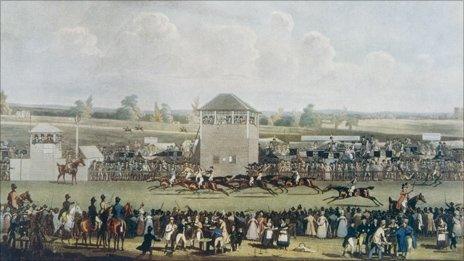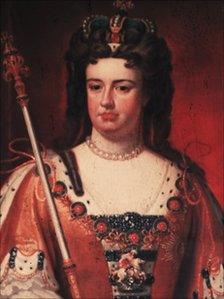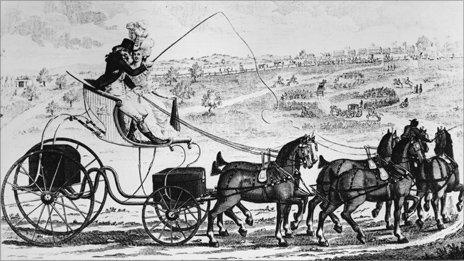Ascot Racecourse: A royal history
- Published

The Ascot racecourse was built in 1711
As this year's Royal Ascot gets underway in Berkshire, BBC News looks back at the racecourse's history as it marks its 300-year anniversary.
Today, Ascot is world famous for its racecourse, with races throughout the year.
However, it is only called Royal Ascot in June when the Queen attends.
But as racing historian Sean Magee explained, it was royal from the very start.
The 300-year story of racing at Ascot begins in 1711, when Queen Anne put an idea into motion to pursue her love of horse racing.
Also a lover of stag hunting, Mr Magee said that it was on one of her "regular rampages" through nearby Windsor forest when Anne had her "brainwave".
Social event
Her racecourse would appear near Ascot village, which was close to where her hunting hounds were kennelled at Swinley Bottom.
On 12 July 1711, the London Gazette printed that Her Majesty's plates of 50 and 100 guineas would be competed for at the new course the following month, even though at that time the course still needed to be laid out.
"Charles, Duke of Somerset and Master of the Horse, swung into action," said Mr Magee, author of Ascot: The History.

Founder Queen Anne is commemorated by the opening race at Royal Ascot, the Queen Anne Stakes
"Royal account books record the payment to 'sundry workmen employed in making and perfecting the round heat (course) on Ascot Common in the months of July and August 1711'".
Payments were also made to William Erlybrown "for setting up posts and other carpenter's work on the said common" and to Benjamin Culcott for painting the posts.
Mr Magee explained that on the eve of the first meeting, held on Saturday 11 August 1711, author Jonathan Swift wrote that "much company is come to town this evening to see tomorrow's race".
"The first Ascot meeting must have been considered a success as a second followed in September 1711," said Mr Magee.
"Ascot races were quickly established as one of the main social events of the court calendar."
'Gambling and womanising'
However, the death of Queen Anne on 1 August 1714 caused the cancellation of the races later that month, and there is no further record of Ascot races until 1720.
Neither successors George I and George II showed any interest in Ascot Racecourse, but its fortunes were revived by George II's third son and keen sportsman William Augustus, Duke of Cumberland.
Known as The Butcher Of Culloden for his brutal defeat of Bonnie Prince Charlie in Scotland, Cumberland was responsible for the racecourse's first four-day Tuesday-to-Friday fixture in 1749.
Years later in 1785, the Straight Mile was built at Ascot when a marked improvement in thoroughbred breeds saw less emphasis on stamina and more on speed.
The next important royal in the history of Ascot was "the notorious Prinny," said Mr Magee.
He was George III's oldest son, who became Prince Regent in 1811.
"The future George IV is best remembered for his profligacy and hedonism, living his life in a whirl of banqueting, gambling and womanising - three activities which came together in his passion for racing," said Mr Magee.

George IV's decadent lifestyle inspired many satirical prints
He added: "Prinny's patronage made Ascot races one of the most fashionable social occasions of the year, but coverage of his attendance was by no means deferential.
"A famous satirical print of the time depicted 'His Royal Highness the Prince of Wales, with a Lady of Quality, going to Ascot Races' - and the Lady of Quality is anything but."
When Prinny was crowned George IV in January 1820, he ordered architect John Nash to design a new stand, which included a lawn for the exclusive use of guests of the royal family - the beginning of the Royal Enclosure.
But the greatest legacy George IV left to Ascot is the Royal Procession.
"There had been grand entrances before but it was in 1825 that the royal party first made a formal procession up the Straight Mile," said Mr Magee.
"Since then the Royal Procession has provided the most graphic illustration of the connection between royalty and Ascot racecourse."